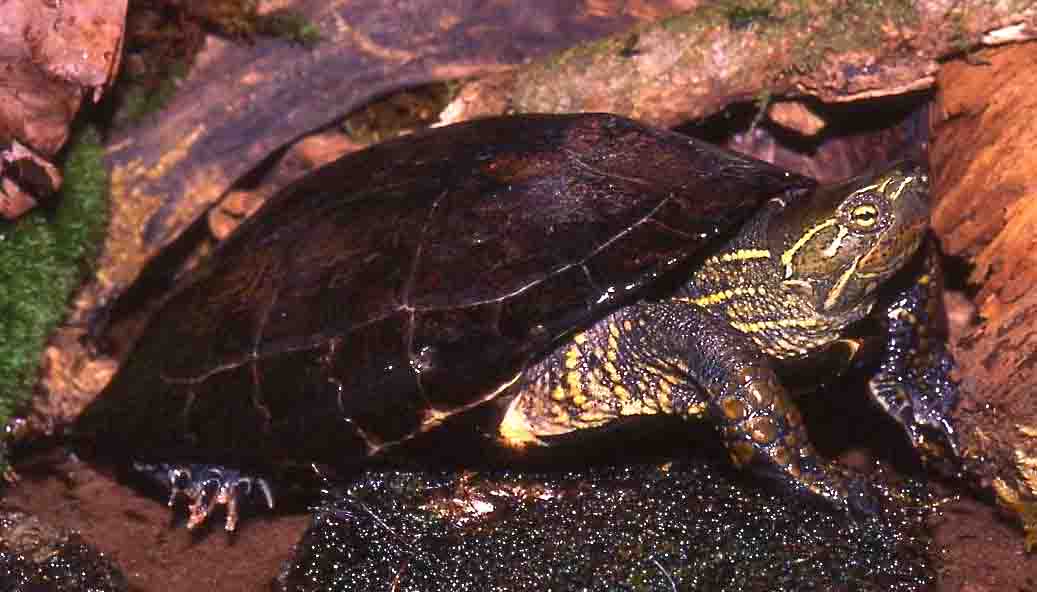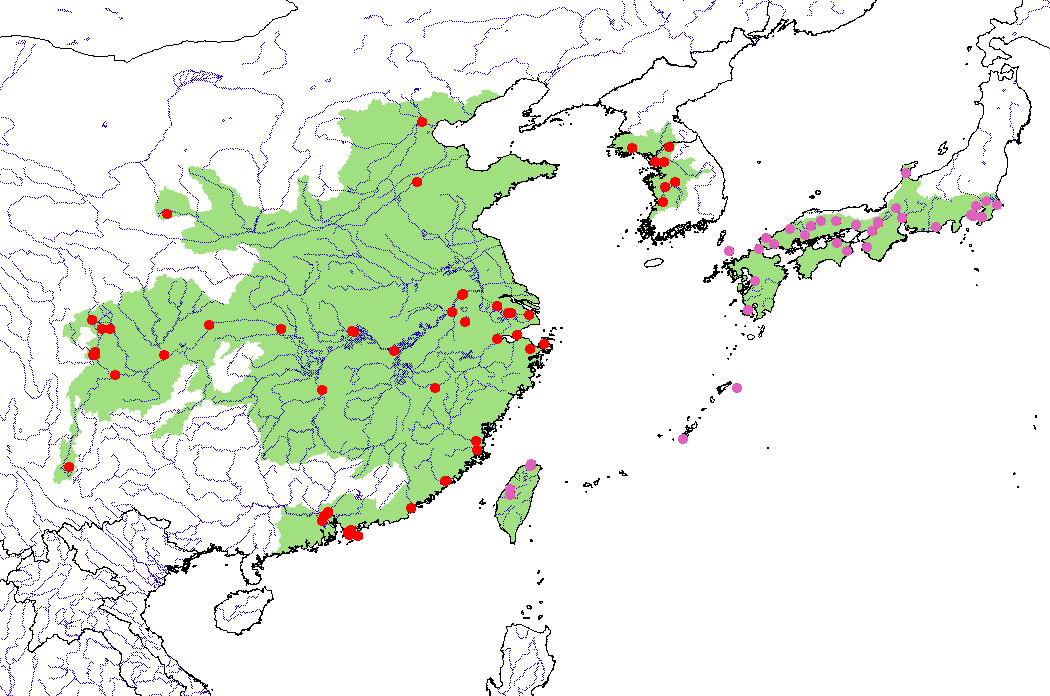Mauremys reevesii, 050
Mauremys reevesii (Gray 1831) –
Reeves’ Turtle, Chinese Three-Keeled Pond Turtle
Jeffrey E. Lovich1, Yuichirou Yasukawa2, and Hidetoshi Ota3,4
1United States Geological Survey, Southwest Biological Science Center, 2255 North Gemini Drive,
MS-9394, Flagstaff, Arizona 86001 USA [[email protected]];
2District Office Okinawa, Takada Reptiles and Wildlife Research Institute, 1-15-3 Teruya, Okinawa City,
Okinawa 904-0011 Japan [[email protected]];
3Tropical Biosphere Research Center, University of the Ryukyus, Nishihara-cho, Okinawa 903-0213 Japan;
4Present Address: Institute of Natural and Environmental Sciences and Museum of Nature and Human Activities, University of Hyogo,Yayoi-gaoka 6, Sanda, Hyogo 669-1546, Japan [[email protected]]
Summary. – Mauremys reevesii, Reeves’ Turtle (or Chinese Three-keeled Pond Turtle) (Family Geoemydidae), is a moderate-sized aquatic species (carapace length to 300 mm) widely distributed in East Asia throughout central and eastern continental China, exclusive of the most southern, western, and northern regions, and including Taiwan, southern Japan, and part of the Korean peninsula. However, the native distribution has been extended by human-aided translocations. The turtle lives in freshwater habitats in lowland areas with still or slowly moving water. Although no concrete data are available regarding the status of most populations, it is apparent that most have experienced major declines as a result of habitat destruction and/or commercial over-exploitation. Intentional and accidental releases of specimens from continental Asia may be altering the genetic stock of Japanese populations. Effective conservation of the species will require habitat protection and regulations to control the collection and transportation of wild animals. Additional studies are needed on the status, life history, and demography of the species.
Distribution. – China, Japan (introduced?), North Korea, South Korea, Taiwan (introduced?); introduced in Indonesia, Japan, Palau, Timor-Leste. Native distribution includes most of central and eastern continental China and the Korean peninsula, with populations in Taiwan and southern Japan possibly introduced in prehistoric and historic times.
Synonymy. – Emys reevesii Gray 1831, Clemmys (Clemmys) reevesii, Geoclemys reevesii, Geoclemys reevesii reevesii, Damonia reevesii, Chinemys reevesii, Emys vulgaris picta Schlegel 1844, Emys japonica Duméril and Bibron in Duméril and Duméril 1851, Damonia unicolor Gray 1873, Clemmys unicolor, Damonia reevesii unicolor, Geoclemys reevesii unicolor, Geoclemys grangeri Schmidt 1925, Geoclemys reevesii grangeri, Chinemys grangeri, Geoclemys paracaretta Chang 1929, Chinemys megalocephala Fang 1934, Chinemys pani † Tao 1985, Mauremys pritchardi McCord 1997 (partim, hybrid).
Subspecies. – None.
Status. – IUCN 2011 Red List: Endangered (EN A2bcd+4bcd) (assessed 2011); CITES: Appendix III (China).
Citation:
Lovich, J.E., Yasukawa, Y., and Ota, H. 2011. Mauremys reevesii (Gray 1831) – Reeves’ Turtle, Chinese Three-keeled Pond Turtle. In: Rhodin, A.G.J., Pritchard, P.C.H., van Dijk, P.P., Saumure, R.A., Buhlmann, K.A., Iverson, J.B., and Mittermeier, R.A. (Eds.). Conservation Biology of Freshwater Turtles and Tortoises: A Compilation Project of the IUCN/SSC Tortoise and Freshwater Turtle Specialist Group. Chelonian Research Monographs No. 5, pp. 050.1–050.10, doi:10.3854/crm.5.050.reevesii.v1.2011, //iucn-tftsg.org/cbftt/.
(Adobe Acrobat 6.0 or later required)

Adult female Mauremys reevesii from Honshu, Japan.
Photo by Nobuhiro Kawazoe.
Distribution:

Distribution of Mauremys reevesii in China, North Korea, South Korea, Japan (introduced?), and Taiwan (introduced?). Red dots = museum and literature occurrence records of native populations based on Iverson (1992) plus more recent and authors’ data; purple dots = occurrence records of apparently introduced populations; green shading = projected distribution based on GIS-defined hydrologic unit compartments (HUCs) constructed around verified localities and then adding HUCs that connect known point localities in the same watershed or physiographic region, and similar habitats and elevations as verified HUCs (Buhlmann et al. 2009), and adjusted based on authors’ data.








